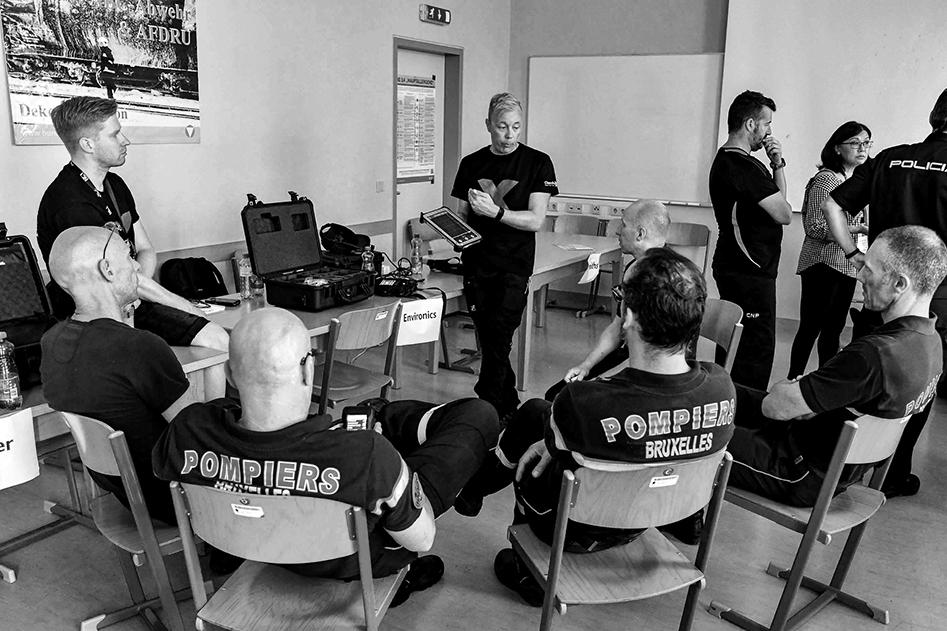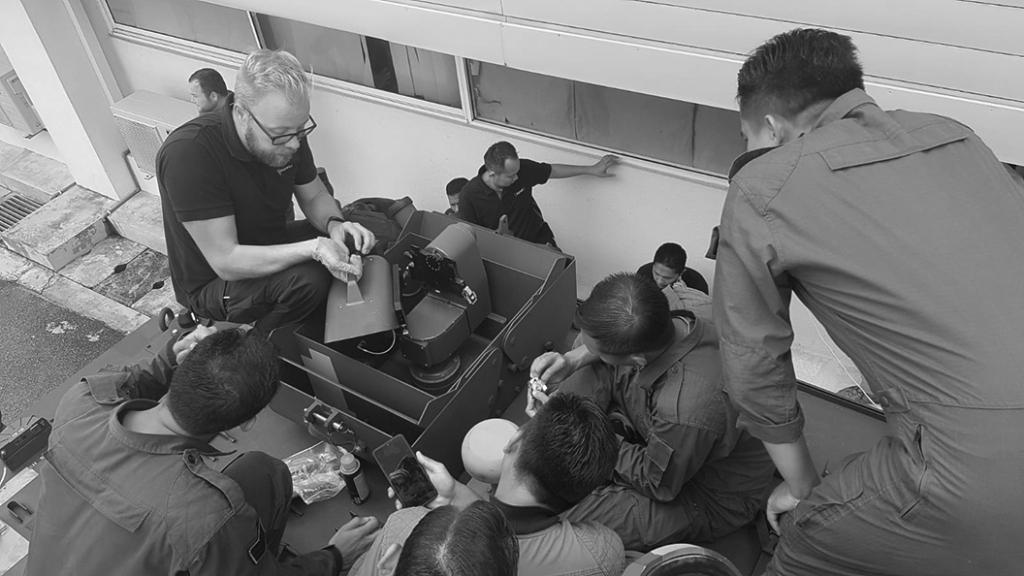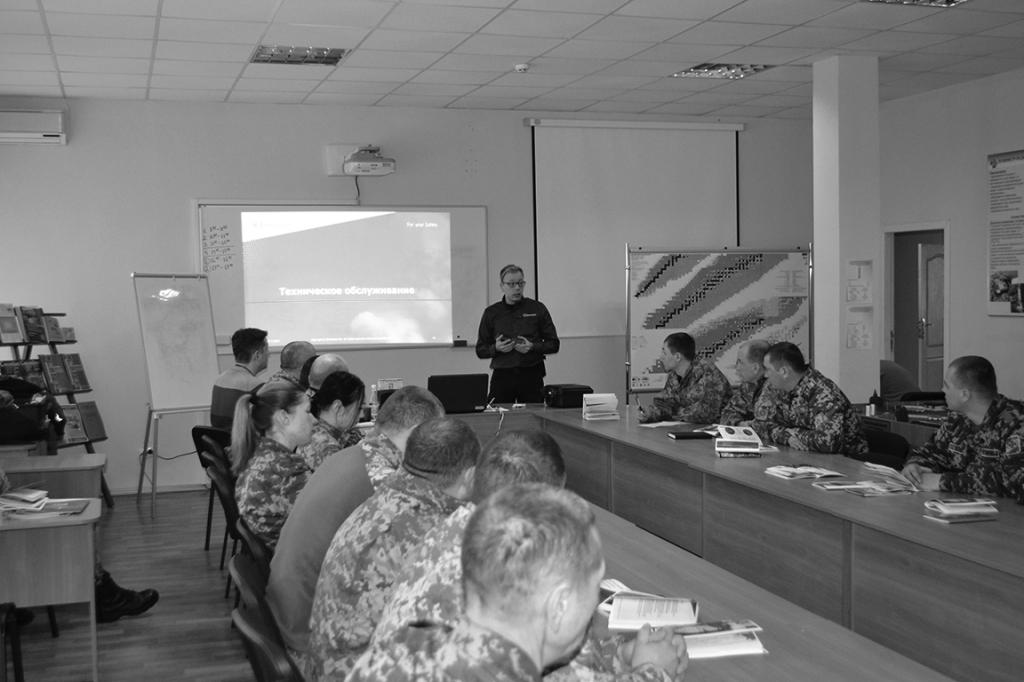Putting the Theory Into Practice
Never say never! I learned this because when I was in general upper secondary school, I said that I will never become a teacher. And guess what happened? I have been an instructor, coach, trainer, training officer, educator, training manager, and home-teacher. So, what have I learned since 1994? Was I born and raised as a trainer?

Motivate
Learning is the process of transforming experience into knowledge, skills, and attitudes. Teaching and training are the transfer of the trainer’s knowledge and skills to the students. I strongly believe that motivation plays a determinant role in the process of learning.
In order to leverage motivation and, consequently, learning, you have to build an atmosphere – a “learning environment” – by using activating training methods. All learning and training events have to be planned in advance to allow for progressive development. The trainer should have a hands-on attitude, and be brave and confident while hosting the training.
What’s the point of having lots of lofty goals and fancy pedagogical terms, if you don’t put them into practice? Well, at least, that’s my opinion.
Play the “All-In”
The trainer should show enthusiasm and put all of their professionalism and competence in each single training session, despite place and time.
As an instructor, one should aim for exceeding their own requirement levels, otherwise it will show in training results and the students’ learning goals achievements. The trainer should be approachable and on the same level of the trainees, both hierarchically and in terms of needs, using the same professional speech and language as the students.
This means that, for a scientific audience the trainer should speak with scientific language and terms, for fire fighters the trainer should use the fire fighter’s “slang”, and not forgetting the usage of technical terms when the message is addressed to engineers.
In addition, the trainer has to know the students’ area of operation, used materials, challenges, operational and tactical practices (SOP), and the threats they face.
Without understanding these factors, the training event will easily become Power Point-execution, with empty monologue and focusing too much on technical “engineer-porn”.

Prepare, Prepare, and Prepare
How are training goals achieved? How can we measure effectiveness? Were the selected methods and tools supportive for the training and learning process? Do these support the students’ assimilation process? It’s good to “spice up” the training event as much as possible, according to the learning goals, learning level, and of course, taking into account the training facilities and technical possibilities. So, don’t rush direct into moon! The most important task is the preparation of the training session. At the beginning, the trainer defines learning objectives that are brief, clear, and specific statements that the students should be able to achieve by themselves at the end of the session, or in any other form of learning outcomes. When the trainer finalizes the material, goes through the training plan and practice, and exercises before the session, he/she will – at least mentally – execute the training sessions.
The training material and tools have always to be adjusted according to the students and environment, to be the best pedagogically suitable. This will increase the trainer’s self-confidence and knowledge of the topics.
In the easiest case scenario, the trainer is able to use previous plans and material as a “copy-paste”, but this will create an increased risk of poor preparation, and lack of quality assessment. Speaking for myself, self-discipline is the key, I always learn something new from “old training material” and “basic training sessions”.
I Was Told To Be Here
Leveraging curiosity and fostering engagement for the training topic can be really challenging sometimes, like rope balancing above the gorge. For instance, different cultural, organizational, hierarchical, sociological, and educational backgrounds, can make it risky for evoking the use of humor in the training. Everyone’s sense of humor is, of course, totally different.
Inspiring is always a good way to motivate. All training sessions take place due to underlying reasons, which need to be understood by the attendees. Physical presence because “we were told to join this training” isn’t enough, the students need to be fully aware of the reason and need for their attendance. By using intellectual stimulation, the trainer can play a key-role for this state of awareness.

Be an Example
Training events are a dynamic interaction between the trainer, students, and the subject. The trainer must constantly observe and assess this ever-changing “movement”, and react to it during the training process. This skill is only gained with experience. Trainers teach and train by their own example.
We have to remember that all trainers have their own personalities, which can be seen on the trainings, and maybe not always in good way. Each instructor needs to commit on their own actions, and the students learning requirements.
Are You Ready?
Feedback is a crucial learning tool, and the trainer needs to be critical about it. All training activities have to develop according the feedback, yet remembering the situation or event, when and how, this was received. However, not everything is black and white, and as a seasoned trainer, you must be able to interpret feedback results.
You are not born as a trainer and leader, you are raised. Specially in the ever evolving CBRN threat field, this growing and learning exercise is a life-time process, where practice by doing is not enough. It requires theoretical reading and knowledge of human behavior, so that the trainer can adjust the type of training environment, methods, and style, for enhanced effects. This knowledge of human nature cannot be developed, if trainers can’t critically evaluate themselves.
The development cornerstones of a trainer are: professionalism, confidence building, enthusiasm, intellectual stimulation, evaluation, efficiency, and satisfaction.
How will remote and e-learning trainings create opportunities and challenges in the future?
How can we get the best benefits, without forgetting that face-to-face training and practicing, is more interactive and effective?
Learn more on
Leave a Reply